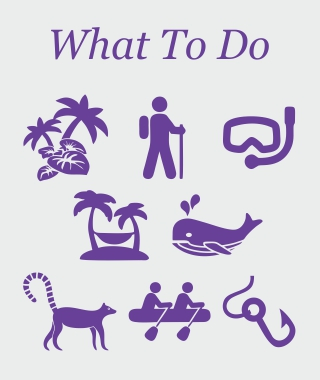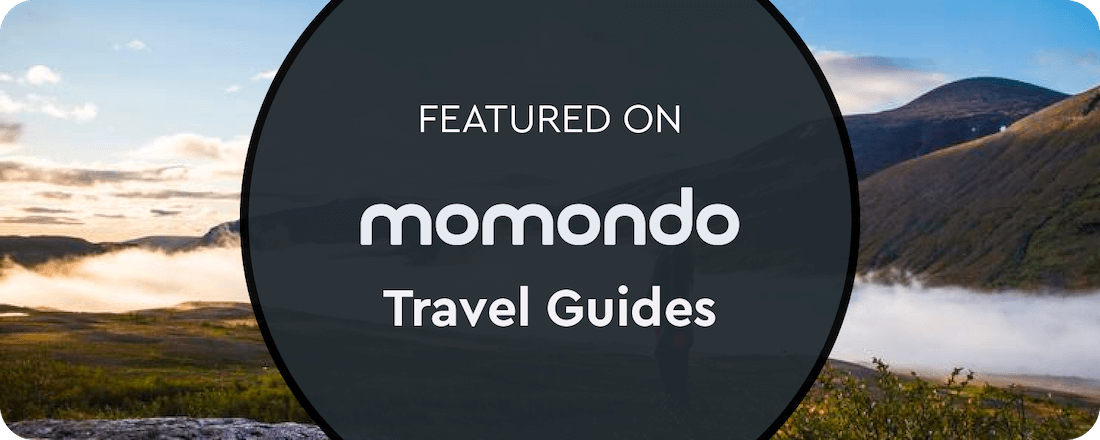Masoala National Park, here the rainforest meets the sea
The Masoala National Park presents a very big tourist interests. The Park is located on the Masoala peninsula, which enclosed by the Indian Ocean in the east and Antongil Bay in the west. On and around the Masoala peninsula are several protected areas. The Masoala National Park combined with the Nosy Mangabe Special Reserve within the bay is the largest nature protected area in Madagascar with a total surface of 240 520 ha. Park is one of six national parks on the east coast of Madagascar, all of which were declared a World Heritage in Danger by UNESCO under the combined name Rainforests of the Atsinanana in 2010.
The Masoala National Park spread over a terrain with varieties of altitude going from sea level up to 1311m high. The specific rock found in the park area is the granite. The Masoala peninsula is very uneven, coastal plain stretches between Tampolo and Cap Masoala. The east side descents to a coastal plain with a width of up to 15km. Along the coast rocks alternate with sandy bays and reefs are located not far from the shore. Masoala is one of the rare regions of Madagascar where the edge of the forest literally meets the sea. A fragile forest corridor joins the forest of the Masoala peninsula with the Anjanaharibe-Sud Special Reserve and the Makira Plateau.
That the Masoala peninsula is truly exceptional is not new: 2% of all of planet earth's animal and plant species resides here. Some species like aye-aye, red-ruffed lemur, Madagascar red owl and the extremely rare serpent eagle are endemic to the peninsula and thus found nowhere else. Masoala harbors also many other novelties.
Nature lovers will be in paradise at Masoala. This densely forested peninsula contains the largest remaining block of protected rainforest and harbors an important part of the fauna and flora of Madagascar, including a wealth of rare and unique species. You would expect plethora of dangerous species – but amazingly the island has been spared anything venomous. Instead, the rainforests and tropical waters teem with weird and wonderful yet harmless creatures and plantlife – each unique species waiting to be discovered – like some planetary treasure trove of life. Explore and experience this exotic paradise. Countless undescribed animals and plants still wait for their discovery in Masoala. Over the half of Madagascar’s known endemic species live around here and make this one of the last real paradises on Earth.
There’s nothing comparable to Masoala all over the world. Thanks to abundance of rain in this region, the Masoala forest is one of the most luxuriant and unique forests. Masoala rainforest harbor within it precious wood: ebony, pallisander, rosewood... There are many species of orchids of singular beauty, but there remains many yet to be discovered.
These different plant formations covering the Masoala Park is a perfect shelter for many species of animals living in the peninsula. The amazing rainforest fascinates nature lovers with its over 60 reptiles and amphibian species, 10 lemurs species, about 15 different mammals and 90 bird species. Over 130 different butterflies and all in all 500 insect species inside this forest make a grand play of colors and give everything an unique soundscape.
The absolute highlight of Masoala national park is the famous Aye-Aye, of which only few individuals still exist at all. This park is home to species of lemur that exist only within it namely the Red ruffed lemur, recognizable by its shiny reddish fur. Eastern Avahi, Eastern Grey Bamboo Lemur, Greater Dwarf Lemur, Weasel Sportive Lemur, White-fronted Brown Lemur, to complete the number of species of lemurs, it also notes the existence of the smallest primate in the world to know the red mouse lemurs.
Remarkable birds of Masoala National Park are as attracting as the other animal groups. They are equally spectacular. The most important bird species are the vanga (including the famous Helmet Vanga), owls, including the red one, bats and the serpent eagle. This latter is a species of the rarest bird and there is currently only a few couples.
Chameleons very representative of Madagascar are also well represented with different species such as Brookezia and Furcifer. These species are varying in size ranging from the smallest to the largest. These species moving nonchalantly are easily approachable as some of them are very colorful and others can be seen right in the middle of the trail while crossing. Beside chameleons, other species which can come with bright colors are the Phelsuma geckos also visible in the Masoala.
As if that weren't enough, the forests, filled with rare, endemic species, tumble down to the edge of a pristine, unspoiled shore peppered with unexplored golden beaches and the three marine parks that protect over 10000 ha of coral reefs, marine plants and mangroves around the peninsula. Presently, more than 3000 fish species have been inventoried in the marine parks. Moreover, the Antongil Bay itself is used also as a sheltered place by humpback whales that gather here during breeding season. During the months of the austral summer, Antongil's waters literally froth with cetaceans.
Antongil bay and the coral reefs are first-class waters for divers and snorkelers, who can find about 20 freshwater fish species, about 100 different corals, dolphins, turtles and even sea cows (dugongs) sharing this habitat, and from July to September it’s time for humpback whales. The warm, coral-rich waters of the Tampolo Marine reserve, offer exciting snorkeling right off the beach. The sea kayaks are ideal for exploring the islands, reefs, rivers and deserted beaches of the sheltered coastline or just to watch the magic of the sunset on the forested mountains. When snorkling, swim next to hundreds of species of coral reef fish. The marine reserve of Tanjona grows a wonderful mangrove forest. The marine reserves of Tampolo, Ambodirafia and Marofototra have superb corals and nice, clean beaches perfect for a swim.
The hiking and trekking opportunities are immense. The main trails for visitors are at Nosy Mangabe, Tampolo/Ambodiforaha, Cap Est, and a several-day hike is possible across the peninsula. One of the best areas is the Alohatrozana, trail, a stunning virgin rain forest located about midway down the western side of the peninsula. On the Western coastal trail, Lohatrozona is a paradise for ornithologists. Exploring the coastal trail, the path between Alhoatrozana and Antalavia weaves in and out of golden-sand beaches, rocky coves, and lush forest in which is probably the most beautiful site in Masoala (see Trekking/Hiking). Accompanied by our competent guides various hiking trail of varying difficulties permit visitors to explore the surrounding forest of Masoala.
While you in Masoala, the choice of activity is yours. Forest walks, snorkeling, kayaking, traditional pirogues, swimming in the sea and the crystal-clear streams, whale watching, fishing and experiencing sustainable life in the rainforest with the local Malagasy community. No matter where you head in Masoala, where you go, swim, dive or stay: Everywhere you’re surrounded by a breath taking number and beauty of rare animals and plants, which let you forget all the efforts and the burdensome travel there. You are looking for the last paradise? Then Masoala is your place to be.
Watch more photos about Masoala National Park here.







